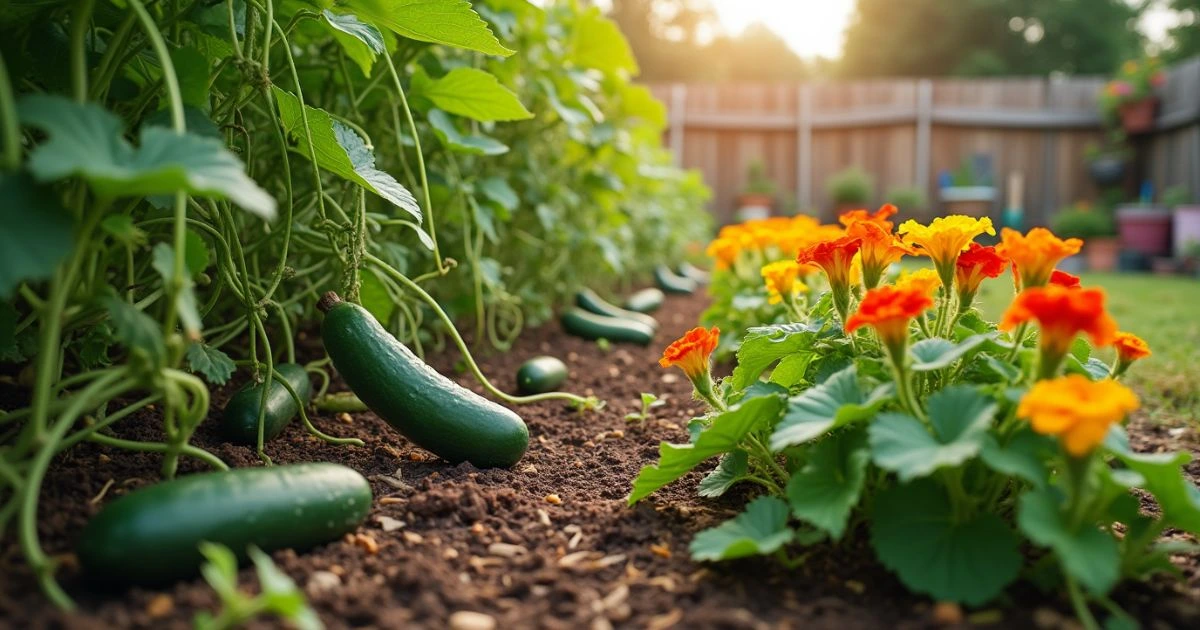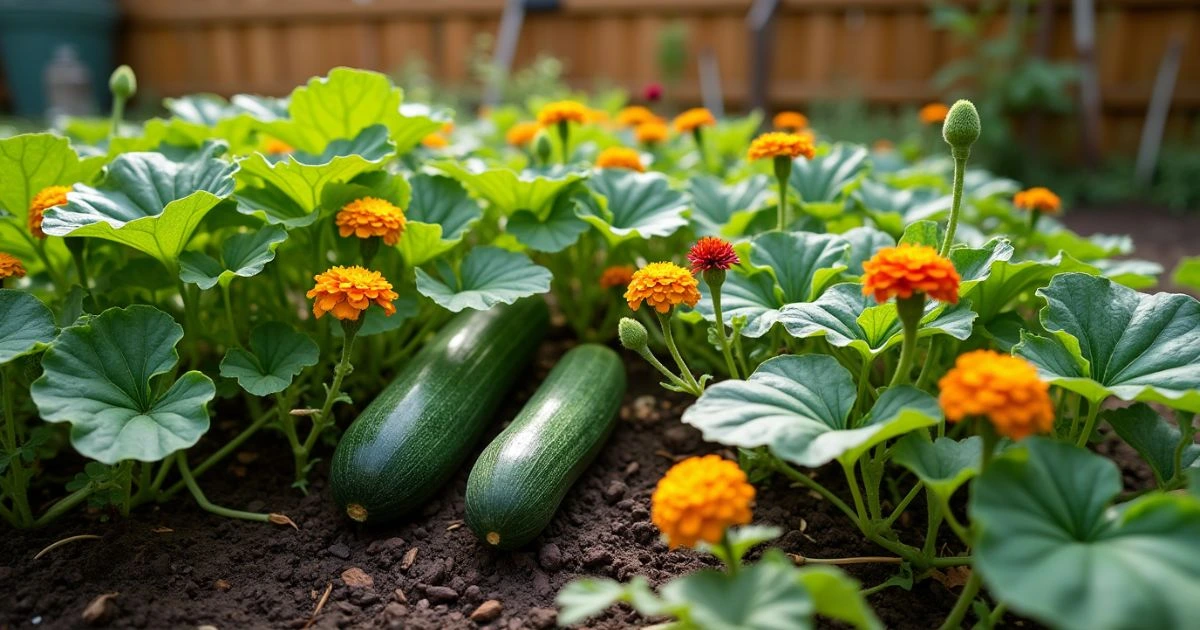If you’re a gardener, you know the importance of having the right companions for your plants. Imagine having a garden that thrives with vibrant colors, healthy vegetables, and reduced pests, all thanks to the magic of companion planting. One companion plant that stands out for its beauty and practicality is the nasturtium. Not only does it brighten up your garden, but it also offers numerous benefits when planted alongside certain plants. In this guide, we’ll explore nasturtium companion plants, their benefits, and the best choices for your garden. Let’s dive into the world of nasturtium companion planting!
Table of Contents
Why Choose Nasturtium as Companion Plants?
You might wonder, what makes nasturtium companion plants so special? Well, nasturtiums are not only stunning to look at, but they also bring several benefits to your garden. Let’s take a closer look at why you should consider incorporating them into your garden plans.
Nasturtium Benefits for Your Garden
- Pest Control: Nasturtiums are natural pest repellents. They attract aphids, whiteflies, and other harmful insects away from your more vulnerable plants. By serving as a “trap crop,” nasturtiums draw pests in, keeping them from munching on your tomatoes, cucumbers, or brassicas.
- Improved Soil Health: The sprawling vines and leaves of nasturtiums can also help retain moisture in the soil and reduce weed growth, making them an excellent ground cover. Additionally, nasturtiums have shallow roots that don’t compete with your plants for nutrients, making them a perfect partner for many garden vegetables.
- Attracting Beneficial Insects: Nasturtiums are a favorite among pollinators, such as bees and butterflies. These insects will be attracted to your garden, helping improve pollination for your crops.
- Edibility and Aesthetic Appeal: Not only do nasturtiums serve practical purposes, but they are also edible! Both their flowers and leaves are flavorful and can be used in salads, pestos, or as garnishes, adding a peppery taste. On top of that, their vibrant flowers add a splash of color to your garden.
Now that you know why nasturtiums are great for companion planting, let’s dive into the best nasturtium companion plants that will work wonders in your garden.
7 Amazing Nasturtium Companion Plants to Try Now
1. Tomatoes: A Classic Pairing

One of the most common nasturtium companion plants is the tomato. Tomatoes often suffer from aphids and whiteflies, which can damage their leaves and stunt their growth. By planting nasturtiums near your tomatoes, you’ll attract these pests to the nasturtium instead, keeping your tomatoes safe.
Key Benefits for Tomatoes:
- Repels aphids and whiteflies, which are common tomato pests.
- Encourages healthier growth – Nasturtiums protect tomatoes from pest-related stress.
- Improves pollination – Bees love nasturtiums, which helps your tomatoes thrive.
2. Cucumbers: Perfect for Pest Control

Cucumbers are another vegetable that benefits from companion planting with nasturtiums. Cucumber beetles can damage cucumber plants by chewing on their leaves and stems. Nasturtiums help protect cucumbers by drawing these pests away.
Key Benefits for Cucumbers:
- Acts as a trap crop for pests – Keeps cucumber beetles away.
- Ground cover for moisture retention – Helps prevent the soil from drying out.
- Enhances cucumber growth – With fewer pests to deal with, cucumbers can grow stronger.
3. Radishes: The Hidden Heroes

Radishes and nasturtiums are a fantastic pairing. Radishes are especially vulnerable to pests like flea beetles, which can ruin their delicate leaves. Nasturtiums naturally repel flea beetles, making them an excellent companion for radishes.
Key Benefits for Radishes:
- Repels flea beetles – A common pest for radishes.
- Aids in soil aeration – The roots of nasturtiums help break up compacted soil, promoting better root growth for radishes.
- Easy to grow together – Both plants thrive in similar conditions.
4. Zucchini and Squash: Protecting Your Fruits

Squash and zucchini are beloved by pests like squash bugs and cucumber beetles. By planting nasturtiums nearby, you can deter these pests, protecting your crops and encouraging bountiful harvests.
Key Benefits for Zucchini and Squash:
- Repels squash bugs and beetles – Keeps pests away from your prized squash.
- Natural mulch alternative – Nasturtiums act as a living mulch, retaining moisture and preventing weeds.
- Enhances plant health – Less pest damage means healthier plants with better fruit production.
5. Beans and Peas: Boosting Growth Naturally

Beans and peas thrive when paired with nasturtiums, as they improve soil health and encourage pollination. Nasturtiums don’t compete for nutrients, and their presence attracts beneficial insects that aid in pollination.
Key Benefits for Beans and Peas:
- Improves nitrogen fixation – Nasturtiums’ presence enhances the soil’s nitrogen levels, benefiting beans and peas.
- Attracts pollinators – Bees and other insects help boost pollination for higher yields.
- Companion growth – Both plants complement each other’s needs, leading to strong, healthy crops.
6. Brassicas (Cabbage, Kale, Broccoli): A Natural Defense

Nasturtiums are great companions for brassicas, such as cabbage, broccoli, and kale. These vegetables are often plagued by aphids and cabbage moths, but nasturtiums can help keep these pests at bay.
Key Benefits for Brassicas:
- Repels cabbage moths and aphids – Keeps your cabbage family plants healthy and pest-free.
- Helps with soil structure – Nasturtiums’ roots aerate the soil, making it easier for brassicas to grow strong.
- Minimizes pest damage – Nasturtiums naturally divert pests away from the more vulnerable brassicas.
7. Herbs (Basil, Mint, Dill): A Flavorful Combination

If you’re looking to enhance your herb garden, nasturtiums can be wonderful companions to herbs like basil, mint, and dill. These herbs benefit from the pest-repelling properties of nasturtiums, and the herbs’ fragrances enhance the overall health of your garden.
Key Benefits for Herbs:
- Repels pests – Nasturtiums help protect herbs from common pests like aphids.
- Encourages biodiversity – The combination of herbs and nasturtiums attracts a wide range of beneficial insects.
- Improves flavor – Nasturtiums’ presence can help boost the essential oils in herbs like basil and mint.
How to Plant Nasturtium with Companion Plants
Now that you know which nasturtium companion plants to choose, let’s go over how to plant them together for the best results.
Choosing the Right Location
Nasturtiums flourish in full sun but can also adapt to partial shade. They prefer well-draining soil, but they are not too picky about soil quality. In fact, they grow best in slightly poor soil, as too many nutrients can lead to excessive leaf growth rather than vibrant flowers.
Spacing and Layout
When planting nasturtiums with companions, consider the space each plant needs to grow. For example, tomatoes and cucumbers require more room for their sprawling vines, while radishes and herbs can be planted closer together.
Spacing Recommendations:
- Tomatoes: 18-24 inches apart.
- Cucumbers: 12-18 inches apart.
- Radishes: 6-8 inches apart.
- Zucchini and Squash: 18-24 inches apart.
Care and Maintenance
While nasturtiums are relatively low-maintenance, they do benefit from regular watering, especially during dry spells. Avoid overwatering, as they prefer slightly drier soil conditions. Prune back excess growth to maintain airflow and prevent mildew.
Nasturtium Recipes and Edible Uses
One of the best parts of planting nasturtiums is their edibility. Both the flowers and leaves can be used in various dishes, adding a spicy, peppery flavor to salads, sandwiches, and even pestos.
Nasturtium Salad Recipe:
| Ingredient | Quantity | Notes |
| Fresh nasturtium leaves | 1 cup | Washed and dried |
| Nasturtium flowers | 5-7 flowers | Adds vibrant color to the dish |
| Olive oil | 2 tbsp | Use extra virgin for best taste |
| Lemon juice | 1 tbsp | Freshly squeezed |
Instructions:
- Toss the nasturtium leaves and flowers in a bowl.
- Drizzle with olive oil and lemon juice.
- Season with salt and pepper to taste.
FAQ: Nasturtium Companion Plants
What Are the Benefits of Planting Nasturtiums with Vegetables?
Nasturtiums offer natural pest control, attract pollinators, improve soil health, and can even be eaten. These benefits make them an ideal choice for companion planting.
Can Nasturtiums Grow in Pots with Companion Plants?
Yes, nasturtiums grow well in pots and can be paired with smaller vegetables or herbs. They make great container plants, providing both beauty and functionality.
Are Nasturtiums Good for Pest Control?
Absolutely! Nasturtiums act as a trap crop, drawing pests away from more vulnerable plants. They naturally deter aphids, whiteflies, and other garden pests.
Do Nasturtiums Improve Soil Health?
Yes, they help retain moisture, reduce weeds, and improve soil structure, making them a great ground cover plant that doesn’t compete for nutrients.
Conclusion
Nasturtium companion plants are an invaluable addition to any garden. They offer a wide range of benefits, from pest control and improved soil health to attracting pollinators and providing beautiful, edible flowers. By choosing the right nasturtium companion plants, you can enhance the health and productivity of your garden while creating a vibrant, colorful space.
Are you ready to try nasturtium companion planting in your garden? Start experimenting with these 7 amazing plants today, and watch your garden thrive like never before. Happy planting!


